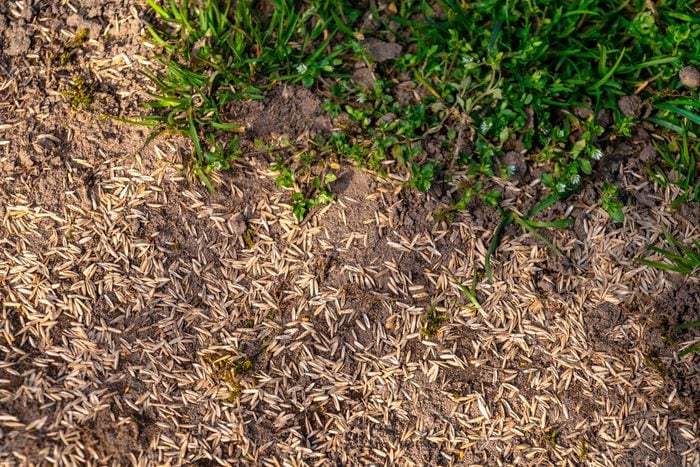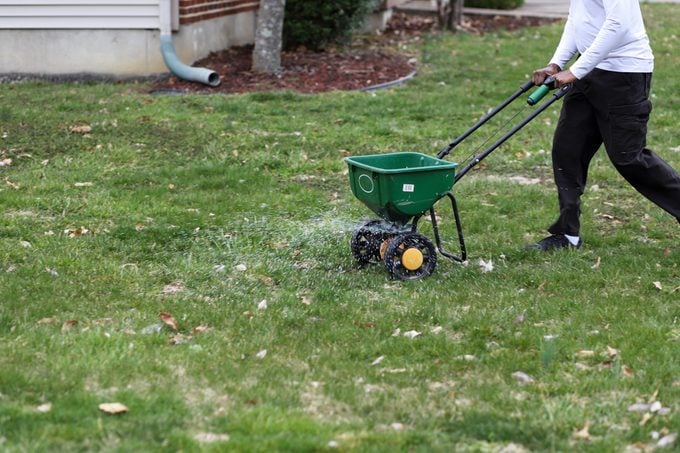Tips for Planting Grass Seed in Fall
Updated: Dec. 15, 2023

You can plant grass seed anytime during the growing season, but doing so in fall takes advantage of cooler temperatures and milder sun.
How many plants are in your yard? If you have a lawn, the answer is: Too many to count. The average quarter-acre lawn contains millions of grass plants.
Fortunately, these plants start easily from seed. As one of the most common plants on the planet, grass is easy to grow. Still, timing and technique are important. With fall is in the air, it’s a great time to start thinking about sowing some grass seed to have a lush green lawn in the spring.
On This Page
Should You Plant Grass Seed in Fall or Spring?
Yes to both! Fall is best for starting lawns in the North, while spring is better in the South. However, fall is the time for overseeding Southern lawns with a cool-season grass variety so they stay green in winter. So fall seeding has its place in both regions.
When Is the Best Time To Plant Grass Seed?
That depends on where you live and what kind of grass you’re growing. Cool-season grasses (Kentucky bluegrass, tall fescue, perennial ryegrass) thrive in the cooler temperatures of fall, while warm-season grasses (Bermudagrass, centipede grass, bahiagrass and zoysia grass) peak in late spring and early summer.
Those are optimum times for growth, and consequently the optimum times to sow grass seed for the respective cool- or warm-season grass. If sowing in fall, do it at least 45 days before your expected first frost date. That could be late September in Minnesota, or early November in Oklahoma.
Planting Grass Seeds in the Fall
Here’s how to ensure your fall grass seed sprouts easily and effectively.
Soil preparation
As with any garden bed, the time to improve the soil is before planting. It’s especially important for compacted soils or those with primarily heavy clay.
Compacted soils should be loosened; you can do small patches with a spade fork or an entire bed with a tiller. If the soil is poor (say, impervious clay or sieve-like sand), spread a couple of inches of compost and mix it in. Compost helps clay soil drain better and sandy soil retain moisture and nutrients. Plus it adds nutrients and beneficial microbes.
Choosing grass seed
Choose a seed mix suited to your climate and conditions. Many bagged grass seeds include more than one grass species, or a blend of more than one variety. This helps ensure resistance to environmental factors like drought or heavy foot traffic, and promotes genetic diversity.
To make it easier for the consumer, manufacturers label some grass seed mixes specifically for problem situations, such as shade or heavy traffic. These mixes contain the varieties best suited to the situation.
A popular mix might include Kentucky bluegrass, fine fescue and perennial ryegrass. Each brings something different to the table. Kentucky bluegrass forms a thick, lush carpet, fine fescue takes shade, and perennial ryegrass withstands heavy foot traffic, so together they make a formidable team. Moreover, quick-sprouting fine fescue gives protective cover to the slow-out-of-the-gate Kentucky bluegrass.
Planting grass seed

Once the soil is prepared, spread the grass seed. Small batches can be sown by hand, but a handheld spreader will distribute the seed more evenly. Larger areas can be done with a drop spreader, which deposits the seed beneath it, or a broadcast spreader, which fans the seed out in a circular motion.
Once you’ve spread the seed, use a garden rake to lightly work the seed no more than 1/4-inch into the soil. If sowing an entire lawn, consider renting a lawn roller, which will flatten the soil and ensure better seed-to-soil contact.
After that, mulch with straw or a biodegradable seed-starter made with paper, an adhering agent and seed-starting fertilizer. Mulch helps discourage bird browsing while keeping seeds moist for germination.
Watering grass seed
Although mulch helps prevent the sun from baking the seedbed, you still need to water. The key is to keep seeds (and later tender seedlings) moist but not soggy. A mulched bed needs daily watering in the morning. An unmulched bed needs two or three light waterings each day.
Grass seed germination: What to do when grass sprouts
Grass seed germination takes from five days to three weeks, depending on the species. After grass seedlings begin to grow, you can taper off watering. Transition gradually, going from daily to every other day to every three or four days and finally to weekly.
If you’re wondering if grass seed grows in the winter, the answer depends on where you live and the type of seed. Be sure to plant grass seed early enough to become established before the ground freezes. Grass can take a couple of months to become established, and an entire growing season to be ready for extended foot traffic. Here are a few reasons why you should plant grass seeds in winter.
When seedlings are up about an inch, check to see if there are any bare spots that need to be re-seeded. You can begin mowing when new grass is about three inches tall — a milestone that might not be met until spring.